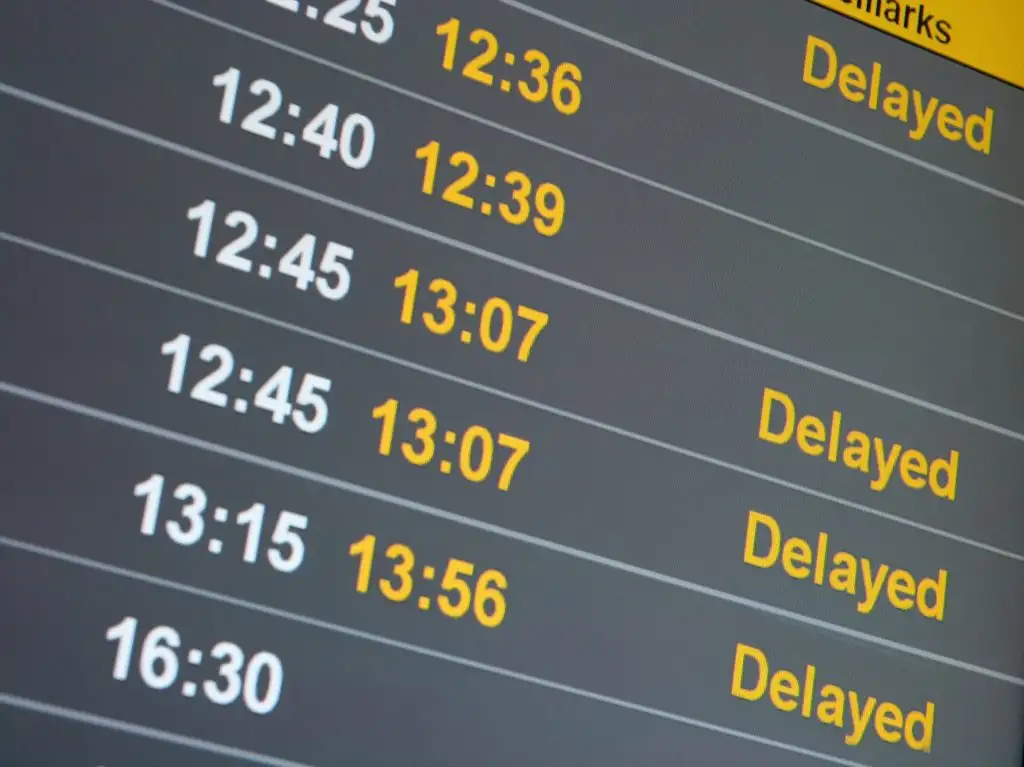Some of the best family memories are made on vacations together. For families who have a child with disabilities, additional factors need to be considered when planning travel. Read on for tips to make the most of your next vacation.
1. Do Your Research

Perhaps nothing is more important to the success of a family vacation than planning. This holds true for families with typically-developing children but even more so for families with children with disabilities. Christine Lowry, M.Ed., M.A., a consultant on inclusive education, recommends choosing a destination that appeals to everyone in the family and offers developmentally-appropriate activities for each family member.
Seek out locales that actively advocate for inclusivity. Lincoln Financial Field, home of the Philadelphia Eagles, has partnered with the Children’s Hospital of Philadelphia to create a sensory room that offers guests a quiet space during a visit to the stadium. Prior to the pandemic, Smithsonian offered Morning at the Museum, inviting families of children, teens, and young adults with disabilities to pre-register and visit a rotating list of Smithsonian museums on specific Saturday and Sunday mornings to have a sensory-friendly museum experience.
Additional factors to consider when choosing a location include the availability of transportation to and from the destination, appropriate hotel/housing accommodations, reliable menu options and settings for meals, and the presence of accessible bathrooms and activities. Reading reviews on websites and social media groups that tailor to communities with specific disabilities, calling a hotel or destination provider ahead of time, and researching modes of transportation can prevent on-site frustration. Does a city offer reliable ground transportation for wheelchair users? Is a hotel room large enough for medical equipment? Paris might be great in the spring, but how wheel-friendly are its subways?
Make sure to communicate specific accommodations to staff in advance of arrival, whether that’s a restaurant with a corner table quiet enough to meet sensory needs or a theater that can arrange to seat patrons who might need a break during the show with easy access to an exit.
Related: 9 Best Wheelchair Accessible Beaches in the U.S.
2. Prepare Families Members’ Expectations
Setting children’s expectations is critical to a vacation’s success. Invite all family members to be involved with planning the vacation and choosing activities. Allow children to help with packing, selecting their favorite, weather-appropriate clothes or comfort items to bring. Both typically-developing children and those with disabilities strive for independence, and they’ll be thrilled if they can choose a vacation activity, restaurant, or outing. Having all family members participate in planning helps ensure that everyone is on the same page.
It is also important to explain the travel process, including what to expect in transit. Carol Grey’s Social Stories help travelers visualize, sequence, and ask questions about the airport, at the hotel/housing destination, and any differences in the environment that may be encountered. Helping children feel familiar with where they’re going to go, what they’re going to do, and what they’re going to see and feel can go a long way to easing travel-related stress. Allowing children to ask questions and imagine themselves in each situation ahead of time is a crucial component of successfully preparing them to navigate new experiences. Especially in the current era of uncertainty due to the global pandemic, as Christine notes, “The need for predictability and consistency is greater now than ever.”
Part of providing consistency is mimicking the home routine as closely as possible. This includes meals and rest-times. Children find security in structure, so wherever possible, keep meal times and rest-times at predictable hours. Christine recommends providing a child with disabilities a picture schedule for each day or explaining the schedule in developmentally appropriate language. In this way, the child will feel a sense of autonomy and greater ease over anticipating what will happen next. If the schedule includes something unfamiliar, the child can prepare an approach for managing that “something different” ahead of time, which will alleviate much of the anxiety around the unknown.
3. Anticipate Travel Delays

Travel delays happen, but planning for them can go a long way in alleviating stress. If traveling by air, call the airlines ahead of time to find out if they seat families of children with disabilities closer to the exit, for easier boarding and deplaning, or allow pre-boarding. Airline accommodations vary, but Southwest offers priority boarding for passengers with disabilities, and both American Air and British Airways keep a wheelchair on board to assist customers traveling to and from the lavatory. Regardless of the mode of travel, bring an easily-accessible bag with favorite toys or activities, as well as snacks and necessary medications or medical equipment. When faced with a travel delay, being able to pull out a child’s favorite coloring book and crayons or storybook can make the travel process more enjoyable for everyone. Packing reliable snacks and meal supplements is important for the destination too, as familiar food offers comfort and not all locales offer all products.
4. Consider Bringing Reinforcements
Jamie Smith Davis, an advocate for Little Lobbyists, a parent-led organization that advocates on behalf of children with disabilities and mother of four (including a daughter with complex medical needs and severe disabilities), finds that traveling is a balancing act between ensuring her daughter is given every opportunity to be included and acknowledging that travel often presents challenges to individuals with disabilities. For Jamie, navigating family travel can mean dividing and conquering. Having extra adults on hand, usually other family members, translates into having options when a chosen activity or destination truly does not accommodate a particular disability. When Jamie’s three younger children wished to visit an underground cavern that simply was not wheelchair accessible, dividing and conquering might mean one adult would stay with her daughter, who loves to swim and would happily enjoy some quiet, one-on-one time at the hotel pool, while the other adults accompanied the siblings on their excursion. Jamie cites that city parks tend to be ADA compliant and can often provide the down time her family needs after a busy day of site-seeing.
5. Make a Medical Plan

No one wants to envision a trip to the ER during a vacation, but emergencies—anything from allergy attacks to jellyfish stings to tumbles from playground equipment—can happen to anyone. For families whose children have complex medical needs or disabilities, the likelihood of taking a detour to the hospital is much greater. Luckily, developing a medical preparedness plan can make that visit to the doctor run more smoothly. Informing a child’s doctor of an upcoming trip and asking for a referral to a local doctor or hospital can save valuable time in a crisis or can make obtaining a forgotten prescription that much easier. Stock up on medications and make sure they’re in an accessible bag. Print important medical documents (insurance cards, medication lists, etc.), before departing. Jamie tries to plan vacations near a children’s hospital and develops a response plan ahead of time in case her daughter has an emergency.
Before your departure, go through worst-case scenarios: Who will accompany the sick child to the hospital, who will remain with the other children, how will the adults stay in communication, who’s responsible for keeping track of medical documentation, etc.? Similarly, if medical equipment is needed during the stay, make sure to pack extra supplies. For someone needing respiratory equipment, a strange hotel room setup might necessitate packing an extension cord or outlet converter. If the return home is pushed back because of weather or travel delays, has enough medication been packed to accommodate the delay? Some locales require extra documentation for controlled substances. Make sure to bring copies of prescriptions and doctor’s authorizations in a carry-on bag.
Related: Tips for Traveling With a Kid Who Has Food Allergies
6. Anticipate the Need for Advocacy and Adaptability
Jamie cites travel’s ongoing “disability tax,” the reality that travel is more costly for families of children with disabilities, because the burden of accommodation often falls on the family. This “tax” may take the form of purchasing additional hotel rooms to ensure sufficient space for medical equipment or forgoing a desired destination because it doesn’t have reliable transportation options. However, Jamie stresses that vacationing with her family, “is all worth it and is manageable,” even if it takes creativity and flexibility to get there.
For families with children with disabilities, navigating vacations successfully may require additional steps, as well as awareness of the need for adaptability on-the-go. Success may necessitate arriving extra early at the airport to allow TSA ample time to inspect a wheelchair, anticipating a child’s sensory overload and building breaks into an otherwise packed day, or browsing a restaurant’s website to determine whether table spacing allows for a wheelchair.
Christine reminds parents that they know their children best—their anticipated reactions to new environments and how to manage challenges if they arise. They can help other family members or fellow travelers understand what support a child may need, and, if the child is not able to do so independently, advocate for that child’s autonomy (within limits). She suggests it’s important to plan and prepare as much as possible, but that it’s equally important to remember the goals of vacation—relaxation, enjoyment, having new experiences, and spending time with loved ones. Jamie stresses that the key to successfully vacationing with her family is following a tested formula—doing lots of research in advance, soliciting input from all family members, setting expectations, and finally, coming up with Plan A…and Plan B.
You Might Also Like:
• 8 Best Water Shoes for the Beach• 11 Best Road Trip Games for Families
• 11 Best Kids Headphones for 2021, According to Expert Advice
• The 9 Best Aquariums to Visit in the U.S.
• The 10 Best Family Vacation Destinations in the U.S.
Our team of parents and travel experts chooses each product and service we recommend. Anything you purchase through links on our site may earn us a commission.







